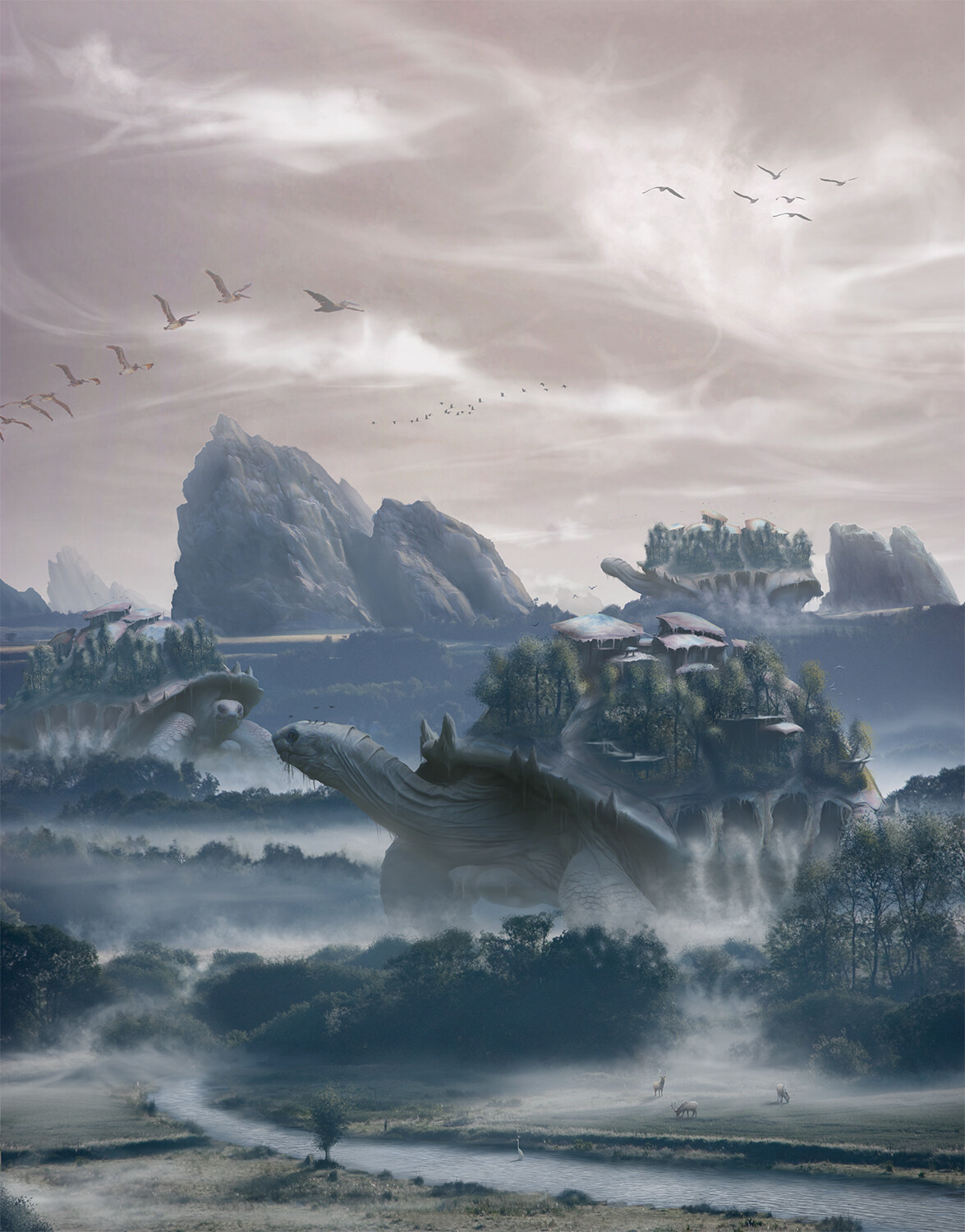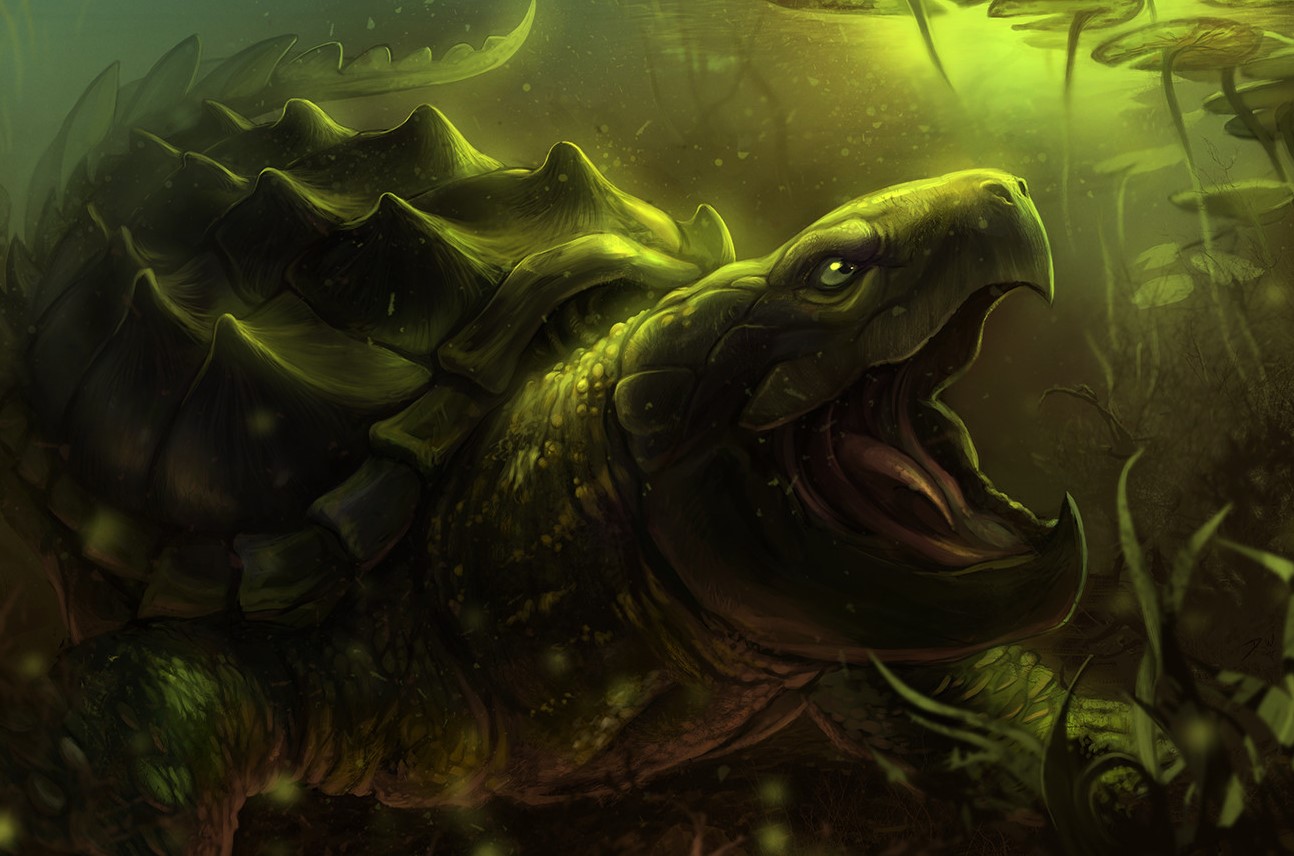Mace Turtle
by hughpierre
Basic Information
Anatomy
Mature turtles are distinguished by a large, heavy head, and long, thick shells with five to seven dorsal ridges of large scales. Some (not all) grow single horns over their noses
Biological Traits
A species of turtle that is sexually mature by age 12 and are capable of living to 200. However, 80 to 120 is more likely in the wild and between 20 and 70 in captivity.
It is thought that mace turtles in the giants' stage of their lives are in yearly pain, on account of their shifting shells. For three months of the year, red and white blood leak from the shells' seams on either of the turtles' sides.
Genetics and Reproduction
When the species is aged 12 to 35, they mate yearly. Males chase after females who then lay up to 25 rubbery eggs beneath sand and mud. The temperature of the environment determines the babies' gender.
Growth Rate & Stages
Hatchling
At this stage of their lives, turtles are incredibly vulnerable to larger predators and changes in the ecosystem. They spend most of their time hiding,and nibbling on vegetation.Mature
Once they have reached sexual maturity, they brave going on land more often in part because some settlements partition certain areas to their exclusivity to encourage them to come to them.Giants
It is said that as long as Mace Turtles have constant food, then they never stop growing.The largest mace turtles grow to be the size of two houses, and capable of bearing equivalent loads. Uniquely, the shells are able to readjust with the growing body due to the smaller shell plates along the turtles' sides being forced up and and continuing to grow to cover the exposed flesh.
Ecology and Habitats
They can capable of living in both fresh and salt water. But due to several human obstructions, juvenile turtles have been pushed up stream of the salt rivers and the older giants have congregate around the lakes of the Mirror Breath, Lake Coco and the Teal Shallows. Occasionally, some would come up to sun bath along the many dikes.
Dietary Needs and Habits
Opportunistic omnivores; tales have glorified their ability to deplete whole ecosystems with their insatiable hunger. They hunt by sitting at the murky lake bottom with their mouth wide open waiting for prey to come in striking distance. Or feed on grass and native fruit when available.
Additional Information
Domestication
Salt States are the principle turtle users. They rear them by coaxing the juveniles out of the wild and managing clutches for the purpose of having long-haul capabilities for cargo, troops and mobile assault platform. However, they can only be used as such in getting across water. It is far more cumbersome to to get the giants to move away from known water sources landwards.
Uses, Products & Exploitation
The turtles' mace shell is named such on account of weapon-seeking warriors killing juveniles to mount their hard, spiky shells on staffs to make ideal clubs and maces.
There are a few states who also deploy the shells of the giants to encircle their cities and break up approaching enemy forces so they must pass through in small numbers.
Geographic Origin and Distribution
The turtles frequently come ashore on Salt Side of the great lakes. All five of the lakes used to be their domain but the construction of several dams and dikes, especially the Grass Dike, have limited their movement.
In Literature
In official Sang Picture Writing, the image of a turtle is indicative of an environmental conservative initiative.
Body Tint, Colouring and Marking
Alligator snapping turtle by Gobius

Morning Mist by Zach Bush





Comments